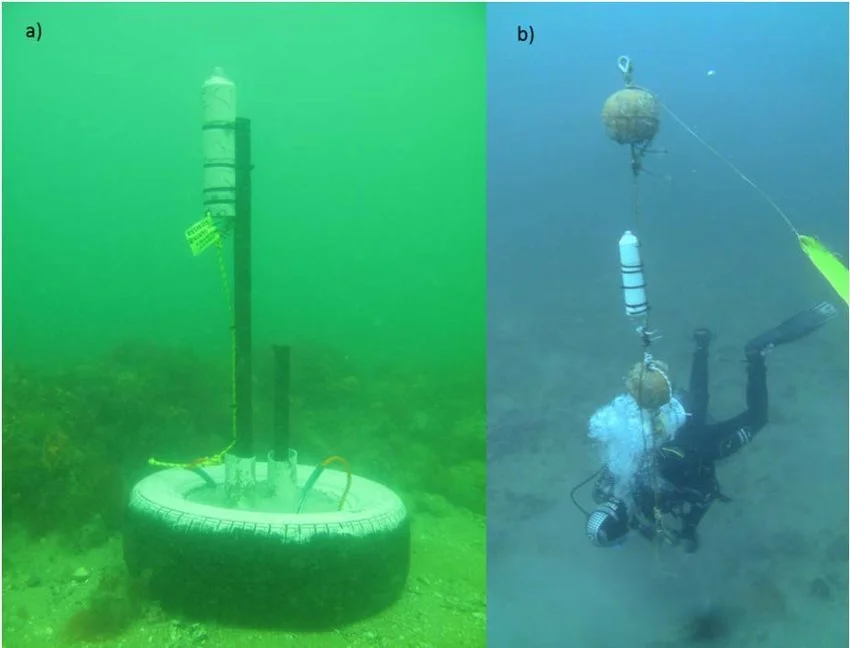Eastern Tropical pacific sharks and rays
studying and protecting Migratory species
The Eastern Tropical Pacific Ocean is considered to be a region that holds an extremely high abundance of fish and exceptional biodiversity, including migratory species such as sharks, giant manta, tuna, whales, dolphins, and sea turtles.
The Eastern Pacific holds some of the most magnificent oceanic wildlife on the planet. Anyone that dives and loves to see nature will have heard of Galapagos, Malpelo, Cocos Island, Guadalupe, and Cabo Pulmo. This region is a magnificent wilderness that is critical for large migratory species as they roam the waters around Baja California, the Gulf of California (also known as the Sea of Cortés), the Revillagigedo Archipelago, the Pacific Coast of Central America, Colombia and Ecuador, and the Cocos-Malpelo-Galapagos swimways.
A lot of tracking has been done in the swimway, the Revillagigedo and the Sea of Cortés area, and on the Pacific Coast, in the Bay of Banderas. But there is a need to extend the tracking along the Central American Pacific coast. When we can show, and prove, where migratory species travel to feed, breed, and have their young, we can better advocate for their protection. Data on movement patterns is one of the most critical steps in pinning down the areas that need protection, and science-based information can help us have a stronger voice in designating Marine Protected Areas. There are several great organizations working in the region. We want to help with some of the most basic logistics that support better tracking and data collection.
Tracking animals in the ocean is much more difficult than on land. Particularly of those animals that do not come up for air. Acoustic tags and listening stations are currently the best way to expand our knowledge. It is our goal to invest in broadening the network of listening stations, beginning with the region south of the Bay of Banderas, Mexico, and then expanding into areas that are prioritized by the research organizations.
Each listening station ranges between $3000 -$4000 including labor, buoys, hardware and boat time. With each listening station, we grow the network. With a growing network, we can advocate for the protection of migratory species and biodiversity in the Eastern Pacific.
How does acoustic telemetry work?
Tags that emit acoustic (sound) signals underwater are attached to the animals. Those tags can then be detected by receiver stations as the animal passes by. Receivers are moored to the seabed and attached to Buoys, which are near or on the surface.
The receiver stores the messages it receives within onboard memory until the receivers are pulled up, data is downloaded, then re-deployed with new batteries to last approximately one year. The future of receivers is in direct data transmission, which will make servicing less frequent.
Acoustic telemetry allows tracking for far longer than any satellite tracking device. A big benefit is that the data are collected by standard equipment that many tracking projects use, enabling detection in places where others are working with the same technology. You can read more about acoustic telemetry here.
Examples of receiver stations.
How does the tagging work?
Acoustic tags are either surgically implanted attached using darts to hold them flush to the outside of the body. Each tag has a lifetime of approximately 5 years, and “pings” at intervals between 30 seconds and 2 minutes for the whole time it’s on the fish. While a tag cannot tell you how the fish got to the location or what it did while it traveled, but it records which individuals pass by within range. While this is limited in painting a complete picture very quickly, it is the best way to collect data that, over time, will show the movement patterns of species. Here is a good description of the process, “Tagging in the Revillagigedo Archipelago”.
What is Shark Allies’ involvement?
It is our goal to assist the great scientific organizations in the area to expand the network of listening stations and to advocate for Marine Protected Areas and other protective measures for sharks and rays.
Regional Organizations and Projects
Pelagigos Kakunja focuses on tagging projects in the Bay of La Paz, Cabo Pulmo, Cabo San Lucas, Clipperton Atoll, Espiritu Santo Archipelago, Guadalupe Island, Islas Marias, Mexican Pacific, Playa del Carmen and the Revillagigedo Islands.
Migramar focuses on the Coiba-Malpelo swimway, the Cocos- Galapagos swimway, and the Mexican Pacific swimways (as listed by Pelagigos Kakunja).
Pacific Manta Research Group focuses on the manta rays of the Eastern Pacific, including the Revillagigedo Archipelago, the Gulf of California, and Banderas Bay, Mexico.





